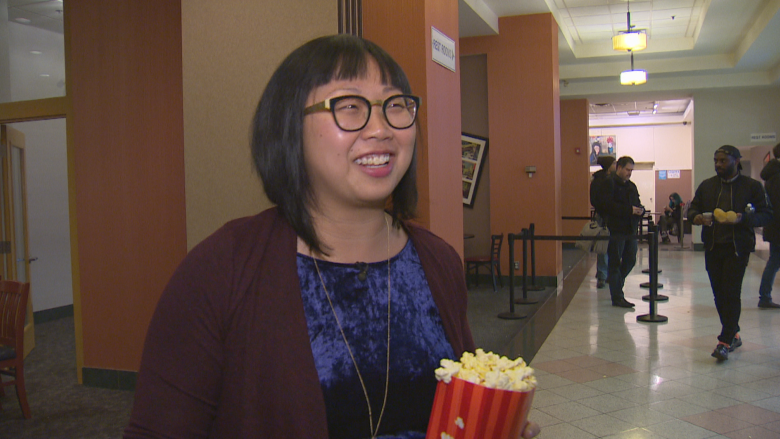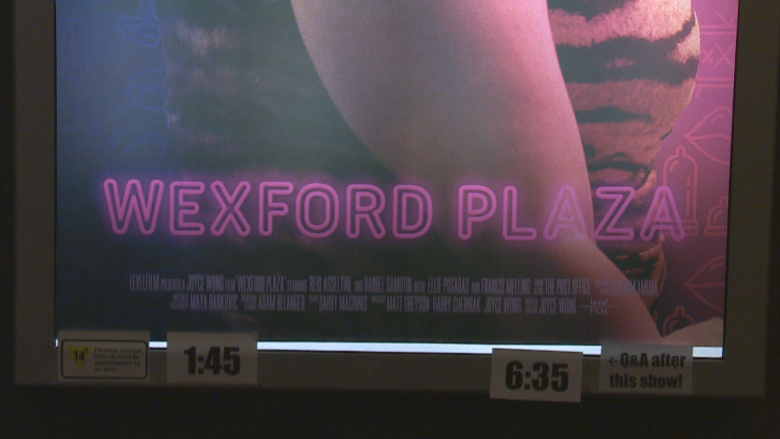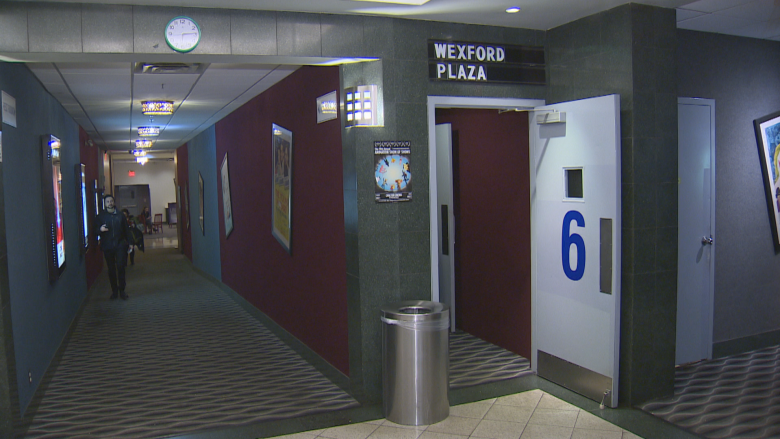Wexford Plaza director Joyce Wong on strip mall romanticism and growing up in Scarborough
Scarborough's stretches of strip malls might not strike you as the most exciting of scenes, but that's exactly where Joyce Wong found the inspiration for her debut feature film, Wexford Plaza.
It's in the midst of suburbia that Betty and Danny, who might not look like your usual big-budget film protagonists, meet and their awkward, slightly off-kilter relationship begins.
CBC Toronto reporter Stephanie Skenderis spoke with Wong ahead of a one-week theatrical run beginning Friday.
Q: You grew up in Scarborough. Why did you choose to make your first feature film about your hometown?
A: You can only make films about what you know. And your high school experiences are just such a formative aspect of your life. So it was just a natural fit to make something that felt really authentic to me and that I could really relate to myself and I felt like all my friends from high school could relate to as well.
Q: Is there anything about your life experiences or growing up in Toronto specifically that influenced this film?
A: It's just this feeling of growing up in a place where you're left out of whatever the main is and you feel left behind and isolated. So I really wanted to show the isolation and the loneliness of growing up in the working class suburbs. And I haven't really seen a lot of films that talk about spaces like that.
If it's suburban it's very like upper-middle class and wealthy, and if it's not that, it's very, very destitute. So I wanted to show something in the middle because i feel like there are a lot of communities in North America that are like that.
When we were in the American south showing our film in New Orleans and Atlanta, there's so many people that related to that kind of atmosphere, that feeling of being left behind.
Q: Why film at a strip mall?
A: We filmed in a strip mall in North York that's based on kind of all the plazas that I've hung out in in Scarborough. There's kind of a certain aesthetic to all of them. They have this 60s idealism but also this immigrant multi-layered, diverse feel.
There's just a romanticism to them that's getting lost because they're all getting replaced by these big box stores in the suburbs right now.
Q: Was there a moment when you decided on strip malls as your focus?
A: One day, I was driving to visit my grandma and there was this strip mall that I used to see there all the time getting renovated. And it kind of hit me a bit: I guess there is a bit of revitalization going on, but the character and those sort of aspects of a community are going away.
So as a filmmaker, when I respond to something like that emotionally, I feel like I should document it. That was one of the first elements that sort of clicked when I thought about making this film.
Q: What is it about your protagonists that's different?
A: My protagonist's name is Betty in the film, played by Reid Asselstine and she is someone who has so much vulnerability and also agency at the same time ... It wasn't until we met Reid that we realized that she was the one who could actually embody the character with that kind of strength. I didn't want to write another female role that was this sad character that was just getting pulled in different directions and then someone saves her. Because that's not real … There's no kind of male hero that kind of comes in and saves her, and she also doesn't fade into the background like a wallflower either.
Q: Were you conscious about challenging stereotypes of what a protagonist typically might look like in a big feature film?
That was definitely a thing for both the male and the female lead roles. With Betty's character, we did have the intention of casting a plus-sized woman, but we didn't want that to be the defining thing about her, just another element of her life
For the male, it's just so rare to have Asian men that aren't emasculated in mainstream cinema ... So I wanted to cast an Asian male as the heartthrob, but not in a whitewashed sense… His characteristics are authentic to being someone who is Filipino, someone who is Asian.
Q: Why was that important to you?
A: It's just not normal to have everyone Caucasian in Scarborough. There's a plethora of different people of colour and that's what I grew up with in my high school. There was Asian kids, West-Indian kids, South Asian kids, people from all different ethnic groups and that was normal was for me.
And when I went to film school and I moved into more art and cultural spaces, they were very, very white. And it was kind of a bit shocking. I mean, you try to fit in and stuff but you still feel a little bit left out and out of place.
Q: What do you hope audiences take from your film?
A: I want audiences to, one: enjoy the film, because i feel like as filmmakers the stories serve the audiences… you respect the audience by telling them a story that's worth their time.
And two, I want people to relate to this story. That's the one thing I would really, genuinely hope for. If there was a young, aspiring filmmaker in a town where they're looking for something on screen that they feel they can relate to, if they connect to it, that would be my ultimate goal.




